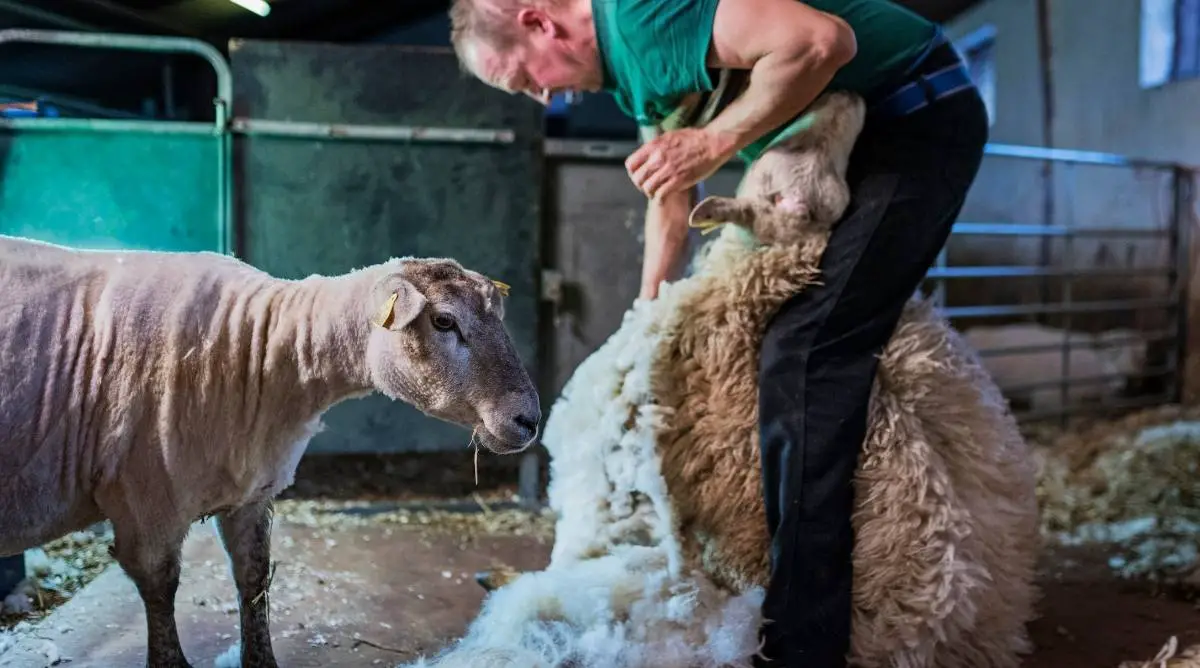Domesticated sheep need to be sheared because their wool grows continuously and doesn’t naturally shed off like that of wild sheep. Shearing maintains sheep’s health and well-being and ensures comfort, especially during hot weather.
Table of Contents
Do you need to shear sheep?
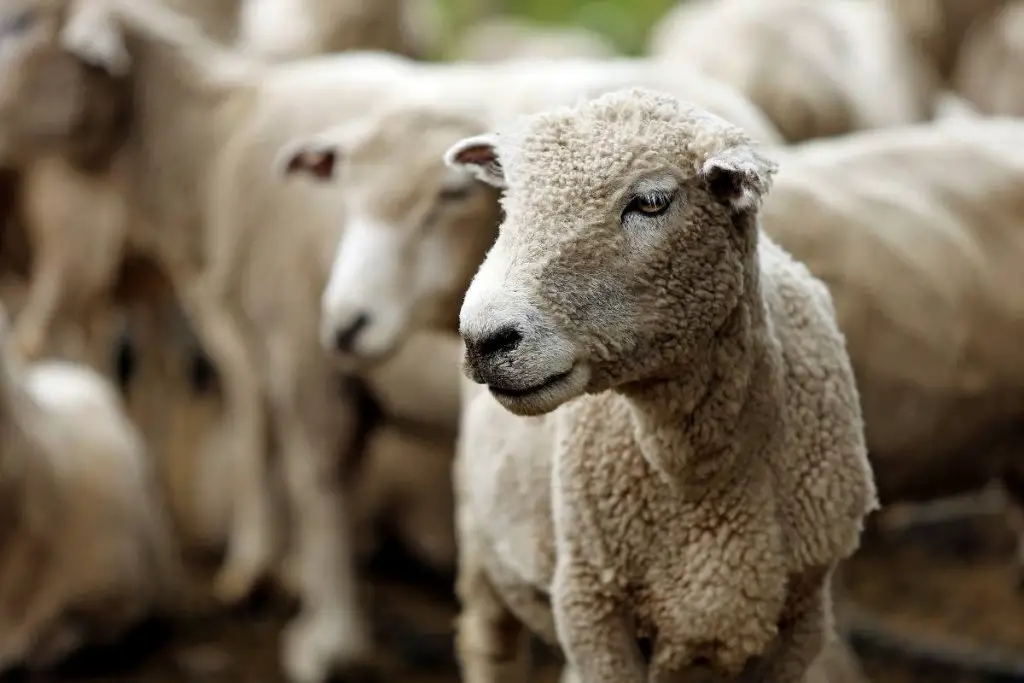
Yes, you need to shear domesticated wool sheep. Hair sheep, however, don’t need shearing, nor do wild sheep. Domesticated sheep have to be sheared because they’ve been bred to grow excess wool, which can be a hazard if left unshaven.
Unlike wild sheep that shed their wool naturally and by rubbing themselves against trees, domesticated sheep don’t naturally shed off their wool.
Sheep breeders created sheep that grow longer wool than usual, primarily for commercial purposes. These sheep need human intervention to shave the wool.
For thousands of years, domesticated sheep have been regularly sheared, with most farmers doing so at least once or twice yearly.
Risks from not shearing sheep
If sheep are not sheared, and their wool grows too long for an extended period, this may pose several risks to the animals.
Risks include:
Parasitic or bacterial infection
As sheep wool grows, dirt, urine, and droppings accumulate inside the wool. If left there for too long, this debris can cause parasitic or bacterial infection, which is a health hazard to the sheep.
Flystrike is one common parasitic infection among sheep that have not been shorn. It’s caused mainly by Australian sheep blowflies, which are attracted by dirt on the wool and form maggots that invade the sheep’s skin. The result is a gruesome condition that can lead to the death of sheep.
Wool blindness
Wool blindness occurs mainly among long-wool sheep breeds. When the wool on their faces grows too long, it can obscure vision.
This is even worse when there’s harsh winter weather because the snow on the sheep’s faces causes the wool to hang down and freeze onto the wool on the lower face. As a result, the sheep cannot see at all.
Wool blind sheep are at risk of being attacked since they can’t see when a predator approaches. They can also fall and drown. Ewes with wool blindness become inattentive mothers since they can’t see their young ones.
To avoid all these risks, farmers pay special attention to the wool around the face when they shear their sheep.
Cumbersome movement
Carrying around several pounds of wool makes movement a challenge. The longer sheep’s wool grows, the more cumbersome their movement becomes.
Impaired movement means the sheep cannot graze freely or keep up with the rest of the flock for safety reasons.
The sheer volume of wool on the sheep can also cause them to get stuck in tight spots, which will risk them being attacked by predators.
Overheating
There’s a reason sheep’s wool is referred to by many as a “winter coat.” It insulates sheep from the cold, especially during the cold winter season.
When sheep are not shorn and the warmer seasons arrive, there’s a high risk of overheating because the sheep can’t control their body temperature under their wool coat.
Overheating makes sheep uncomfortable and can result in lowered libido in rams and reduced reproduction. Even worse, extremely high temperatures during summer can lead to the death of the sheep.
Impaired nursing
Ewes with young lambs require shearing to allow the lambs easy access to the teats to nurse. If the mother’s teats are covered in wool and the lambs cannot reach them, the lambs may starve to death.
Benefits of sheep shearing
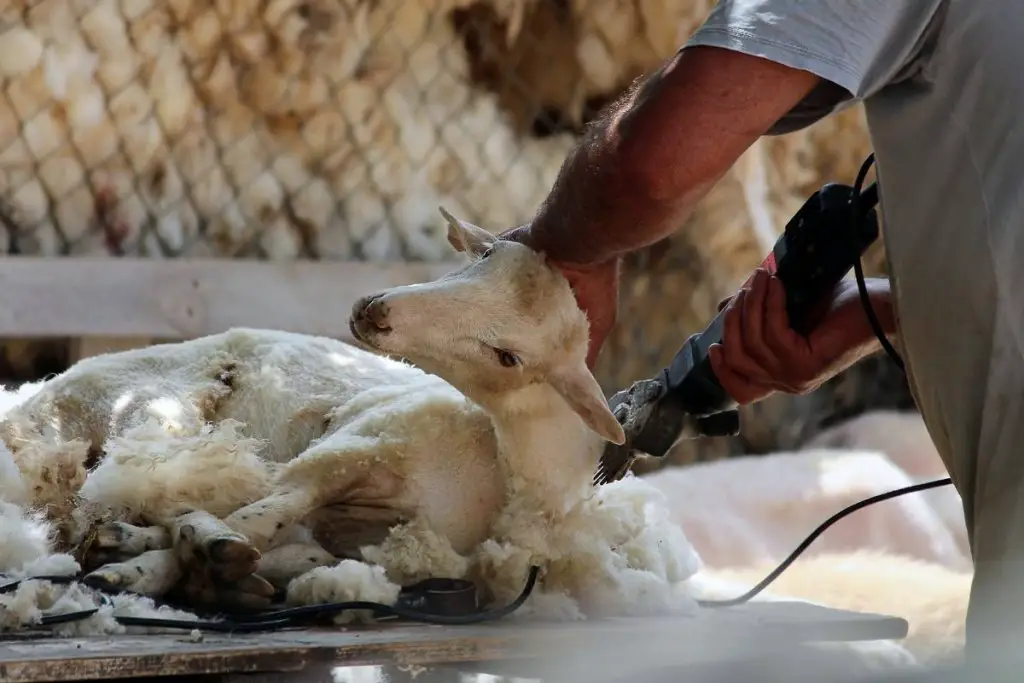
To avoid the risks above, farmers shear their sheep yearly. Even if the fleece from the sheep will not be sold, shearing should still be done for the comfort and well-being of these animals.
Here are the benefits of sheep shearing:
- Sheep can regulate their body temperature, remaining cool in summer and warm in winter
- Prevents the collection of dirt, feces, and urine in the sheep’s wool which can lead to bacterial infection
- Reduces chances of flystrike in sheep due to maggot infestation on dirty wool
- Creates a clean lambing environment and allows lambs easy access to their mother’s teats during nursing
- Prevents wool blindness and reduces susceptibility to predators
- Allows easy and free movement and grazing, without hindrance from thick layers of wool
- Shorn wool also provides financial benefits when sold
Drawbacks of sheep shearing
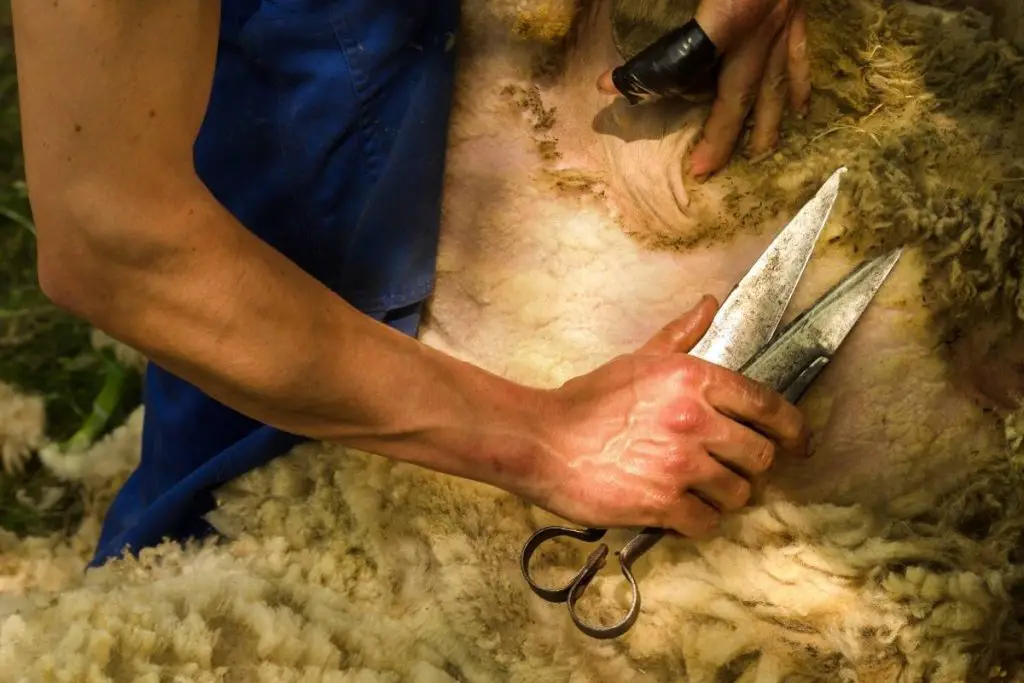
While sheep shearing is necessary for domesticated sheep that grow wool continuously, it also has a few drawbacks.
- Shearing can be painful. If not carefully done, shearing can be painful to the sheep, especially if accidentally nicked. Shearers can avoid this by handling the sheep carefully and using the proper shearing machine. According to the Royal Society for the Prevention of Cruelty to Animals, shearing is an acute stressor on sheep. However, having professional shearers that are well trained to minimize stress, avoid injury, and make the sheep as comfortable as possible during the shaving process is helpful.
- Shearing is time-consuming. This is especially true when handling a large flock of sheep. This can be a burden on farmers if they don’t get any financial profit from selling the wool. However, when viewed as a necessary process for maintaining the health and well-being of sheep, it’s well worth the effort.
- Possible disease transmission. Sheep shearing also risks transmitting pests and diseases from one sheep to another. Safe shearing practices should be practiced to prevent these, including disinfecting equipment after shearing a diseased sheep and handling younger, healthier sheep before older sheep.
How sheep shearing works
Sheep shearing is often done once a year in the spring. Most farmers also plan for ewe shearing about one month before lambing, which also falls around springtime.
Preparing for shearing and wool harvesting can take one to two months. It involves contacting shearers and planning all the season’s logistics. Farmers must also prepare their pens, shearing floor, and equipment many days in advance. Once the day arrives, the shearing process can be pretty quick if all goes as planned.
Professional shearers with lots of experience are very fast. Most take one to five minutes to shear one sheep. It’s possible to find one shearer who can shear up to 150 sheep in a day.
How to make shearing more comfortable
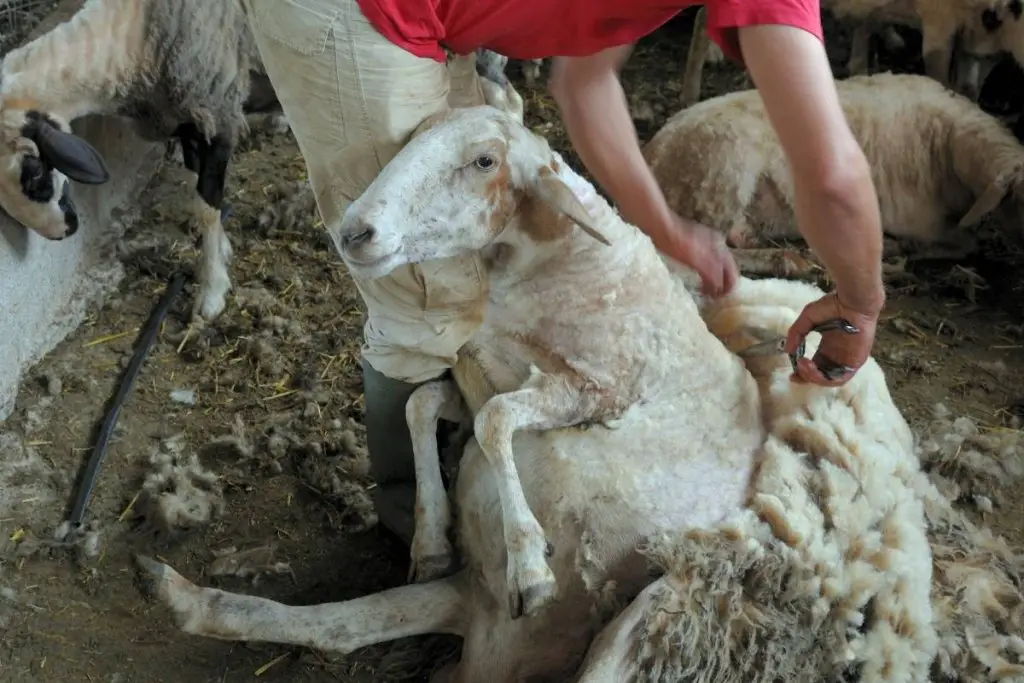
Here are some measures to put in place to make the shearing process more comfortable for the shearers and the sheep.
- Pick a suitable shearing date in advance for you and the shearers.
- Prepare the shearing tools to be used. Most farmers prefer electric sheep shears or clippers. Also, get the wool bags and other supplies ready.
- Prepare the shearing floor (a wooden floor is ideal) and ensure it’s safe and comfortable for the sheep and the shearers.
- Have a first aid kit in case of any injuries or accidents.
- Keep the sheep indoors before the shearing days and ensure they are dry.
- Keep sheep off feeds for at least 12-24 hours before shearing.
- Have sufficient lighting in the shearing shed and ensure enough space and headroom for the shearers.
- Provide food and drinking water for the shearers and allow them some breaks.
- Have extra helping hands to handle the wool and offer any assistance to the shearers.

